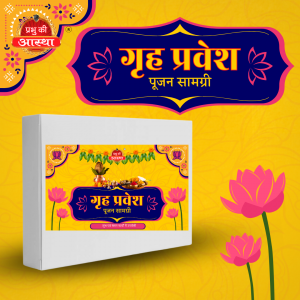Roli, also known as kumkum, is a red-colored powder that is widely used in Hindu religious ceremonies and rituals. It is made by grinding turmeric and other natural ingredients, and is often mixed with sandalwood paste or other items to create a fragrant and colorful paste. Roli is considered to be a sacred substance, and is used to mark the forehead or other body parts as a sign of blessings or auspiciousness. The red color of roli is believed to represent the creative energy of the divine feminine, and is often used to symbolize devotion, purity, and good fortune. Roli is also used in various Hindu festivals and ceremonies, such as weddings, and is often offered to deities as a sign of respect and devotion. The use of roli is an important aspect of Hindu culture and is believed to have spiritual significance in enhancing one’s connection with the divine.
PUJA ROLI DIBBI
Roli, also known as kumkum, is a red-colored powder that is widely used in Hindu religious ceremonies and rituals. It is made by grinding turmeric and other natural ingredients, and is often mixed with sandalwood paste or other items to create a fragrant and colorful paste. Roli is considered to be a sacred substance, and is used to mark the forehead or other body parts as a sign of blessings or auspiciousness. The red color of roli is believed to represent the creative energy of the divine feminine, and is often used to symbolize devotion, purity, and good fortune. Roli is also used in various Hindu festivals and ceremonies, such as weddings, and is often offered to deities as a sign of respect and devotion. The use of roli is an important aspect of Hindu culture and is believed to have spiritual significance in enhancing one’s connection with the divine.
Related products
-
 Read more
Read moreGrih Pravesh Puja Kit – Complete Essentials for an Auspicious New Beginning Step into your new home with divine blessings and positive energy using our Grih Pravesh Puja Kit, a comprehensive set of sacred items specially curated for performing the traditional housewarming ceremony. According to Vastu and Hindu traditions, a Grih Pravesh Puja cleanses the space,…
-
 Read more
Read moreGaumutra, also known as cow urine, is a substance that has been used for centuries in Ayurveda, an ancient system of medicine that originated in India. Cow urine is considered to be a sacred substance in Hinduism, and it is believed to have medicinal properties that can help treat various ailments. In Ayurveda, gaumutra is…
-
 Read more
Read moreRaw cotton, also known as unprocessed cotton, is not commonly used for puja or other religious rituals in Hinduism. However, cotton is a significant crop in India, and in some regions, cotton offerings may be made to deities, especially during festivals like Makar Sankranti. During Makar Sankranti, which marks the transition of the sun into…
-
 Read more
Read moreBengali Sindur, also known as vermilion or sindoor, is a red-orange colored powder that is traditionally used by married women in Bengal as a symbol of their marital status. It is made by mixing turmeric and lime with mercury, which gives it its distinctive red-orange color. The sindur is applied by women on their hair parting and on the forehead, as a sign of their marriage and commitment to their spouse. The practice of applying sindur is considered to be auspicious and has deep cultural and religious significance in Bengali society. The sindur is also used in various religious rituals and ceremonies, and is often offered to deities as a symbol of devotion. However, it is important to note that due to the presence of mercury in traditional sindur, it can be harmful to health if ingested or applied in large amounts. As a result, many modern versions of sindur are now made without mercury, to ensure the safety of users.







Reviews
There are no reviews yet.